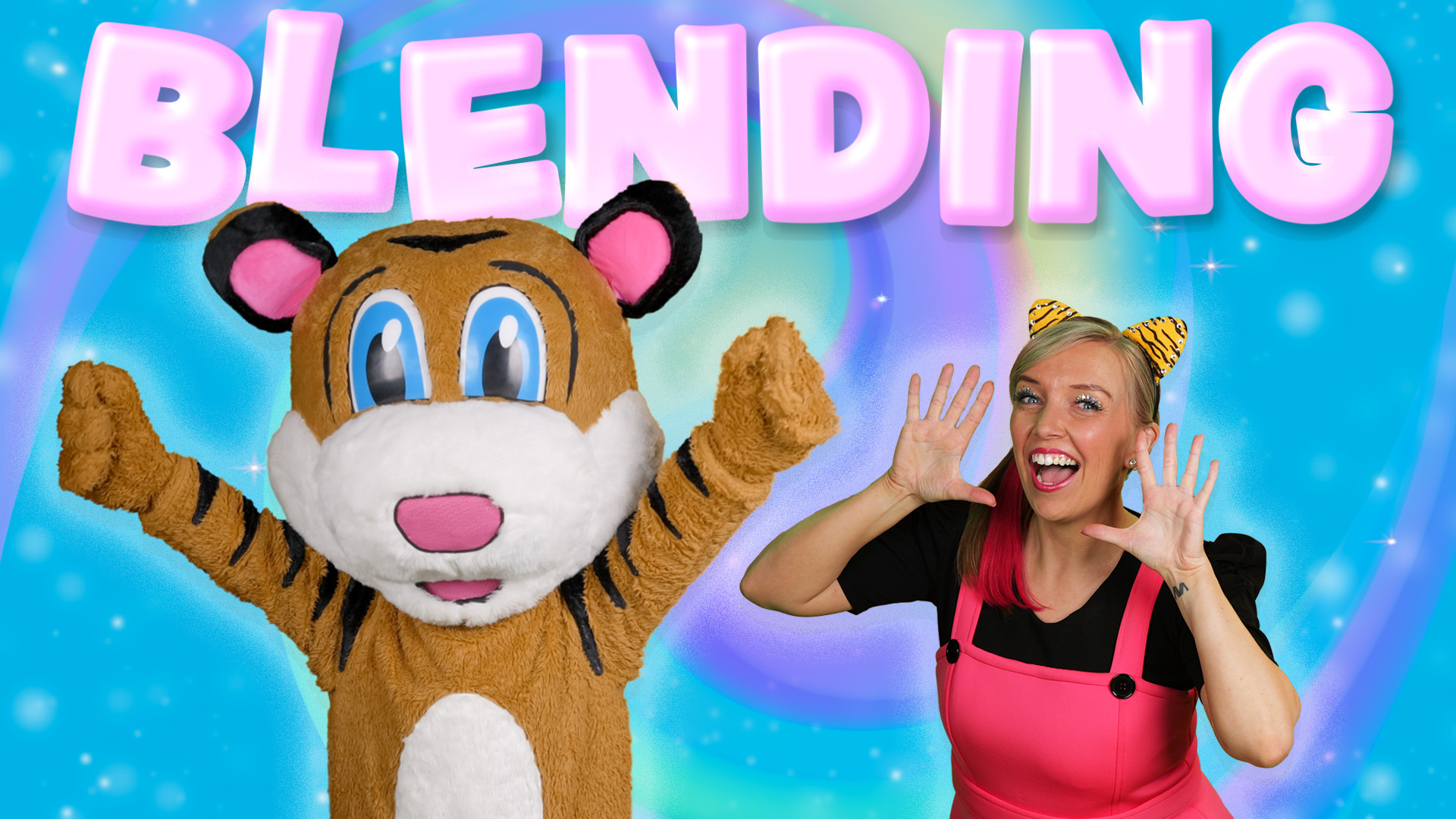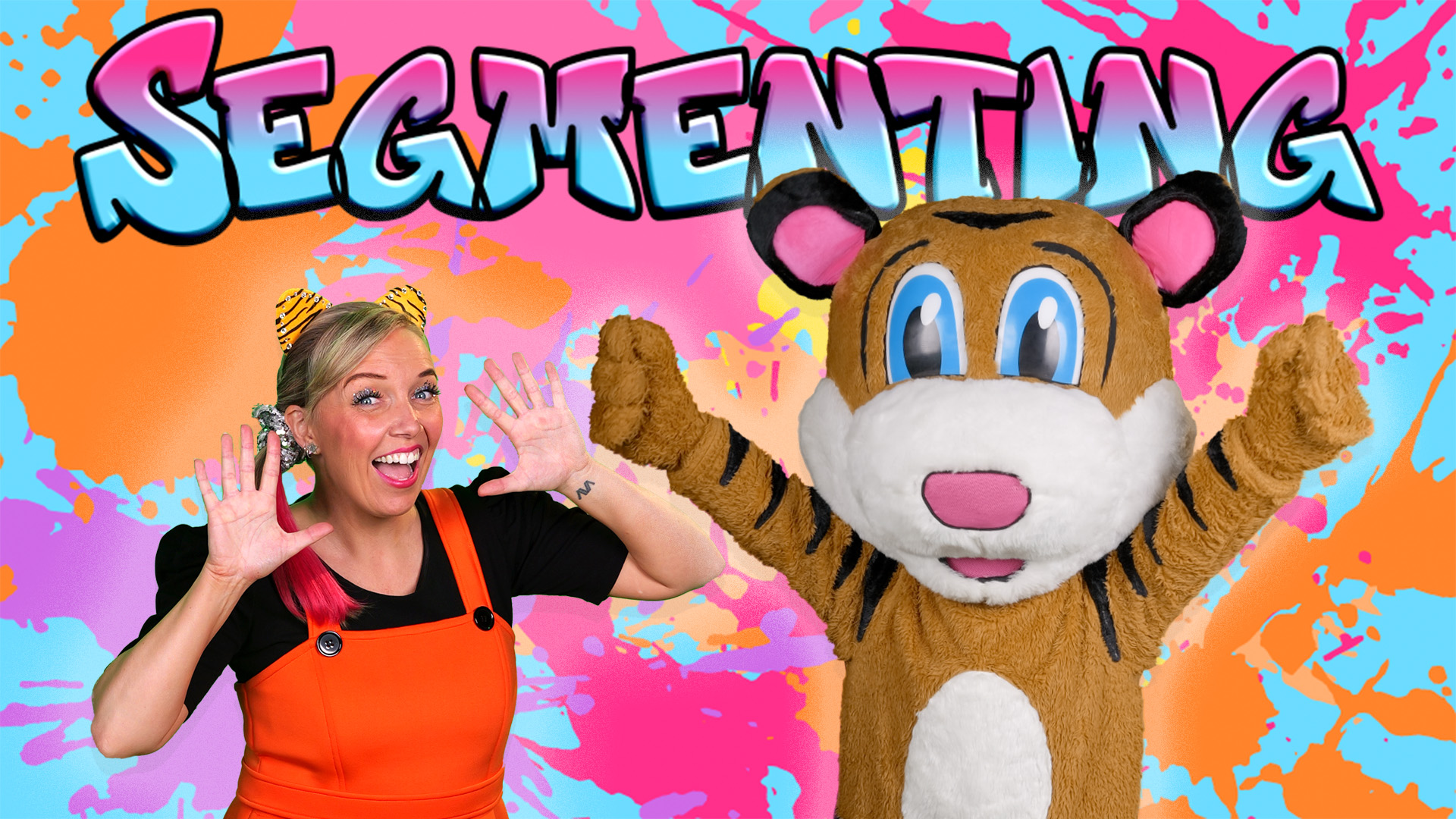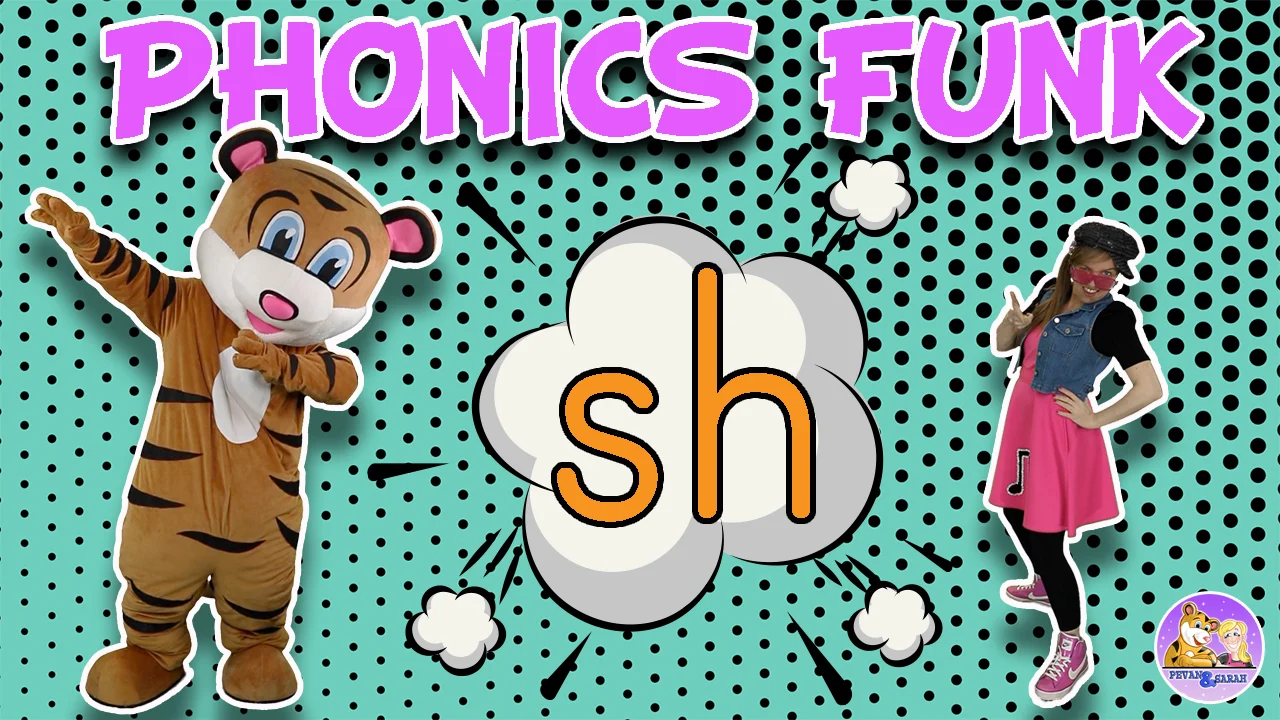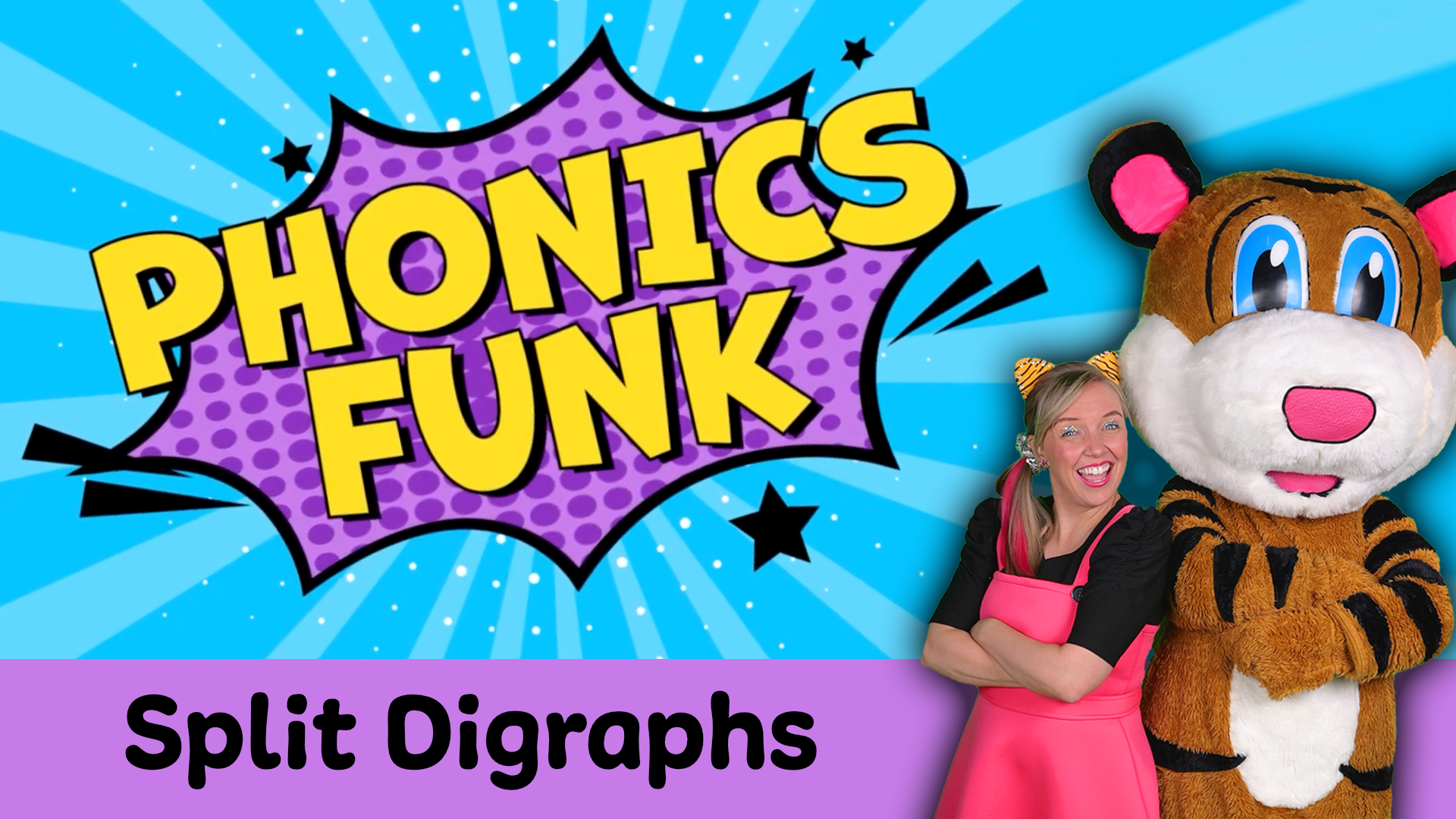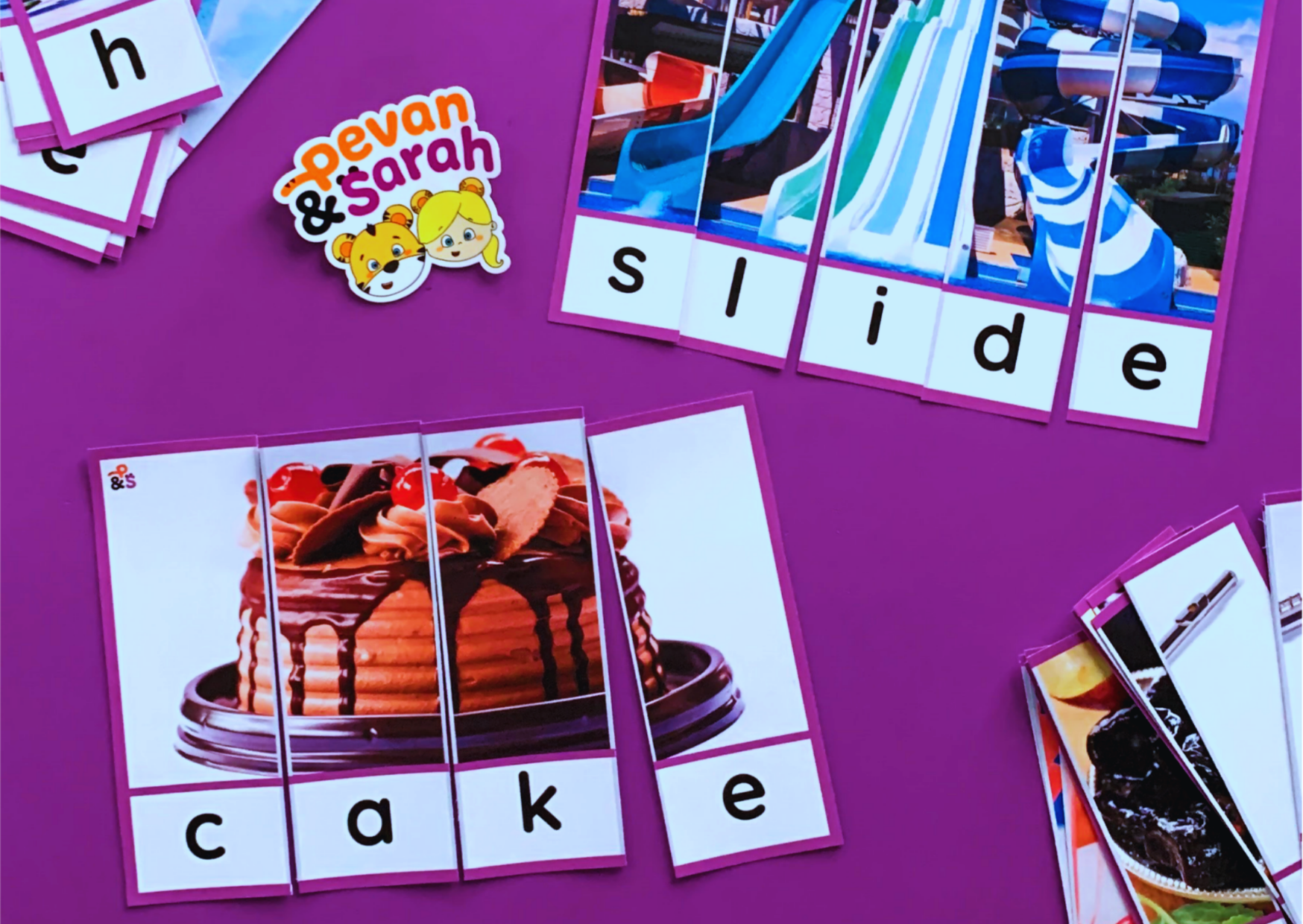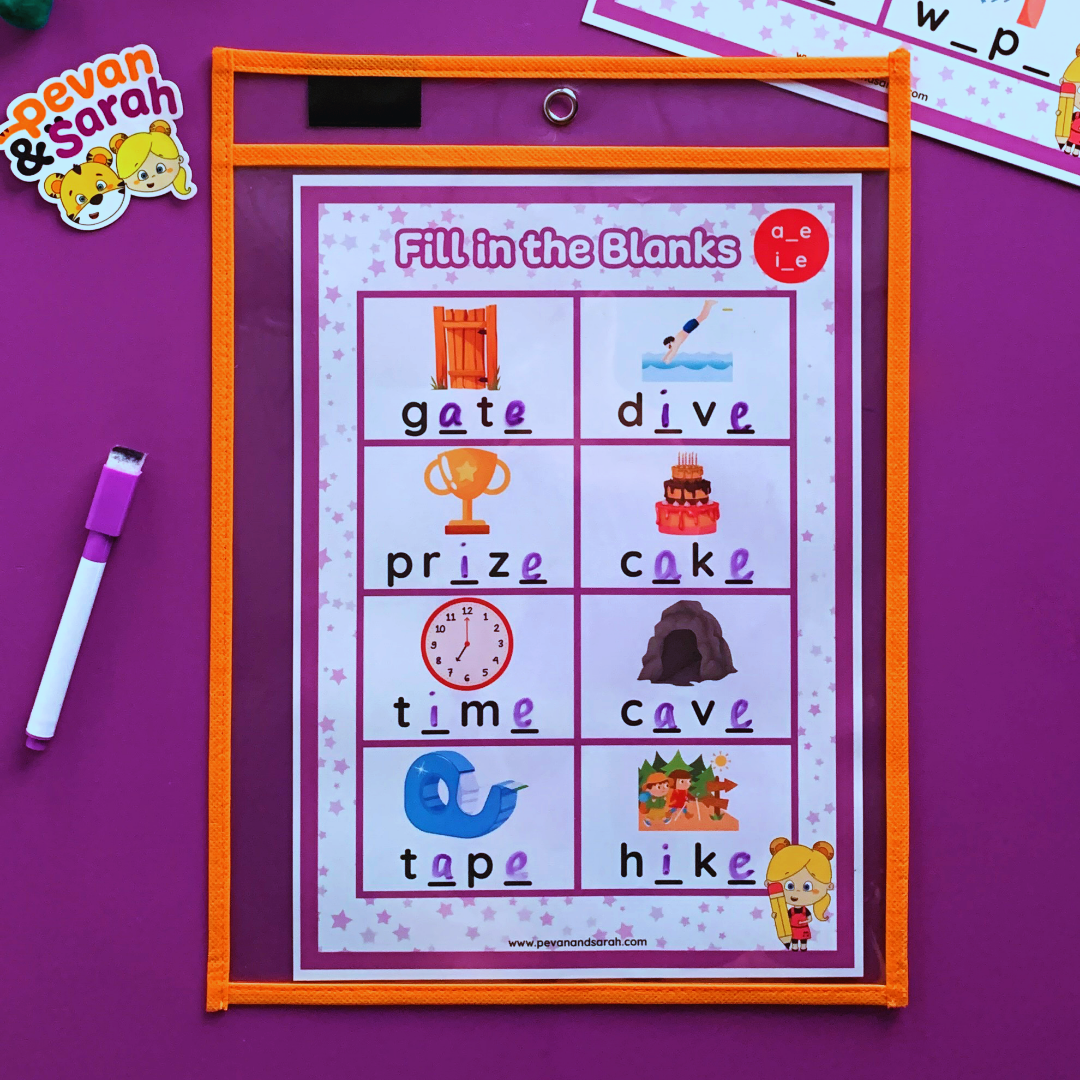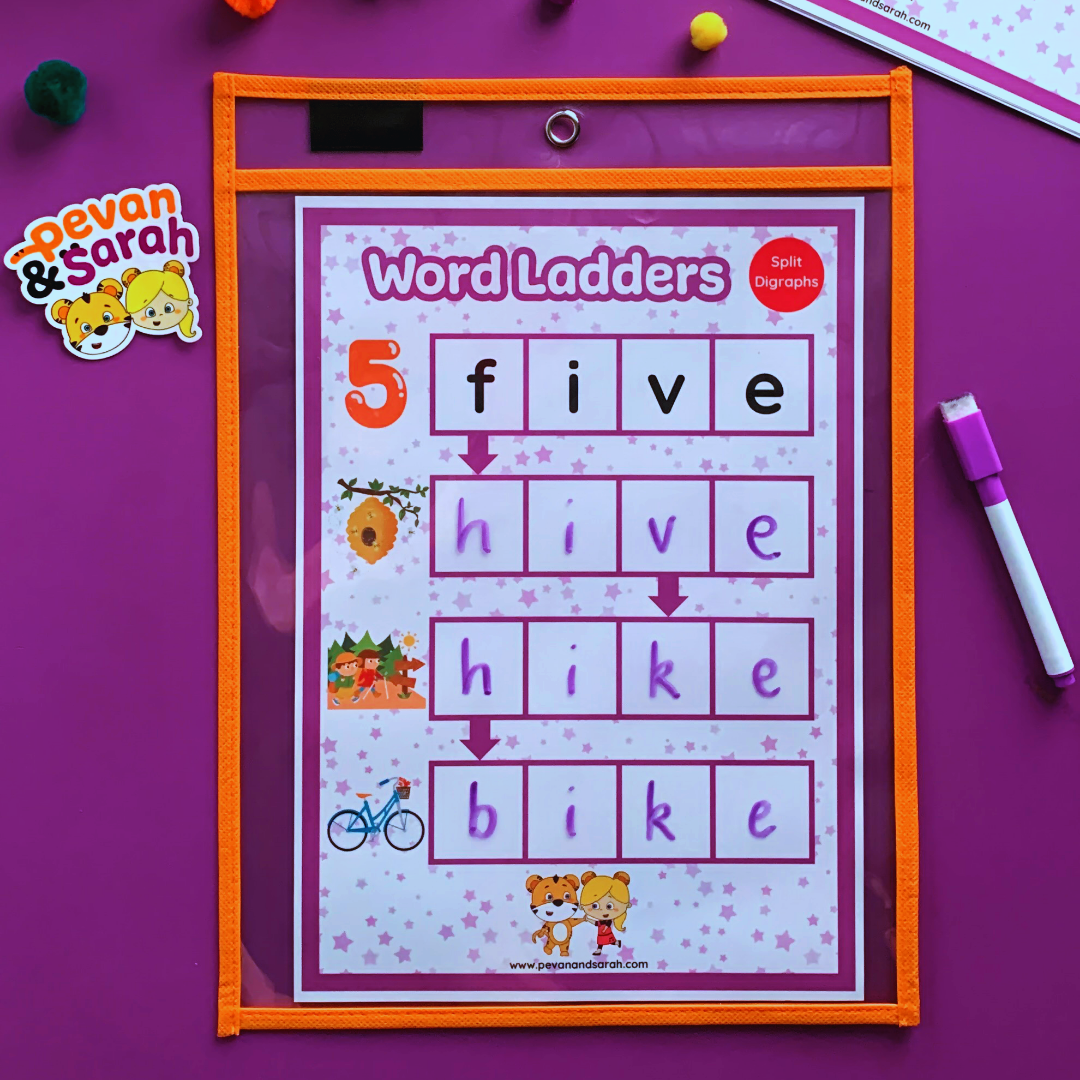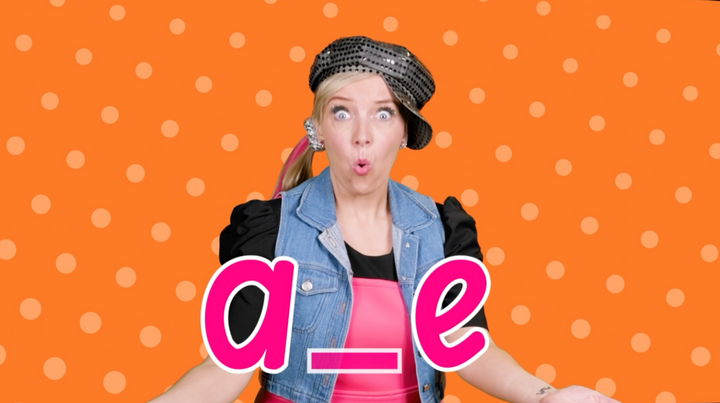
Strategies, activities and games for teaching split digraphs
Teaching split digraphs - also referred to as ‘magic e’, ‘silent e’ or ‘bossy e’ - can be tricky, but with the right approach it can be a fun and exciting milestone in your classroom. In this blog post, we’ll be discussing what split digraphs are, when and how you should teach them, and some fun and effective strategies for teaching ‘magic e’ words in the primary school classroom or at home. Let’s jump on in!
What are split digraphs?
Split digraphs are a special kind of letter-sound combination (or in fancy terms, grapheme-phoneme correspondence - ‘GPC’) that involves two letters that make one sound - a ‘digraph’ - separated or ‘split’ by a consonant. Hence, ‘split digraph’!
We find them in words that are often referred to as ‘silent e’ words, or ‘magic e’, ‘bossy e’, ‘sneaky e’… the list goes on (teachers have really come up with some creative ways to refer to this letter-sound combo!). Simply, they are words containing a_e, i_e, e_e, o_e or u_e.
Examples of split digraphs include the following words: name, fine, these, home and tune.
When should you teach split digraphs?
It depends on when your child or student is ready, but split digraphs are usually taught in Year 1/1st Grade - the second year of school. If you’re wondering what kids should know before introducing split digraphs, here’s a general overview, and some ways that Pevan & Sarah can help with teaching these concepts!
1. Orally blend and segment a range of one syllable words. Check out our blog post on Teaching Blending in Early Reading for a bit more info!
2. Know all letters of the alphabet and the most common sound they make.
🎵 Use our Alphabet Jam & Alphabet Song videos to reinforce letters and sounds. Watch Alphabet Jam - Letter A for free, or sign up for a 7 day free trial of Cub Club to check out both series.
3. Blend and segment CVC (consonant-vowel-consonant) words.
📺 Our Blending and Segmenting series supports these early reading and writing skills with catchy songs and interactive follow-along sections. Episode 1 of each series is free to watch - check them out by clicking the images above.
4. Know common consonant digraphs, such as ‘ch’, ‘sh’ and ‘th’.
🕺 Our OG Phonics Funk series introduces digraphs in a simple and funky way! Watch 'Phonics Funk - sh' for free now. ➡️
5. Understand short and long vowel sounds.
🧑🍳 Learn about Vowel Sounds by 'chopping' short vowel sounds and 'stretching' long vowel sounds! Preview this fun song here, or sign up for a 7 day free trial of Cub Club to watch it all.
It’s also really helpful for students to understand the terms ‘vowel’, ‘consonant’ and ‘digraph’. Knowing the metalanguage makes explaining split digraphs to kids much easier!
Strategies for teaching split digraphs
There are many approaches to introducing split digraphs to kids, but the best option is to teach them explicitly. If students are familiar with the term ‘digraph’ and some of the most common digraphs, you can introduce split digraphs by explaining that they are just like other digraphs - two letters that make one sound - but are ‘split up’ by a consonant. Split digraphs make a ‘long vowel’ sound - a_e makes a long /ā/ sound, i_e makes a long /ī/ sound, and so on.
Show students an example, such as the word cake. Draw an arrow from the ‘a’ to the ‘e’ to show that they are connected. Together, say the sounds in the word - /k/ /ā/ /k/ - and drag your finger from the ‘a’ to the ‘e’ when sounding out the /ā/ sound.
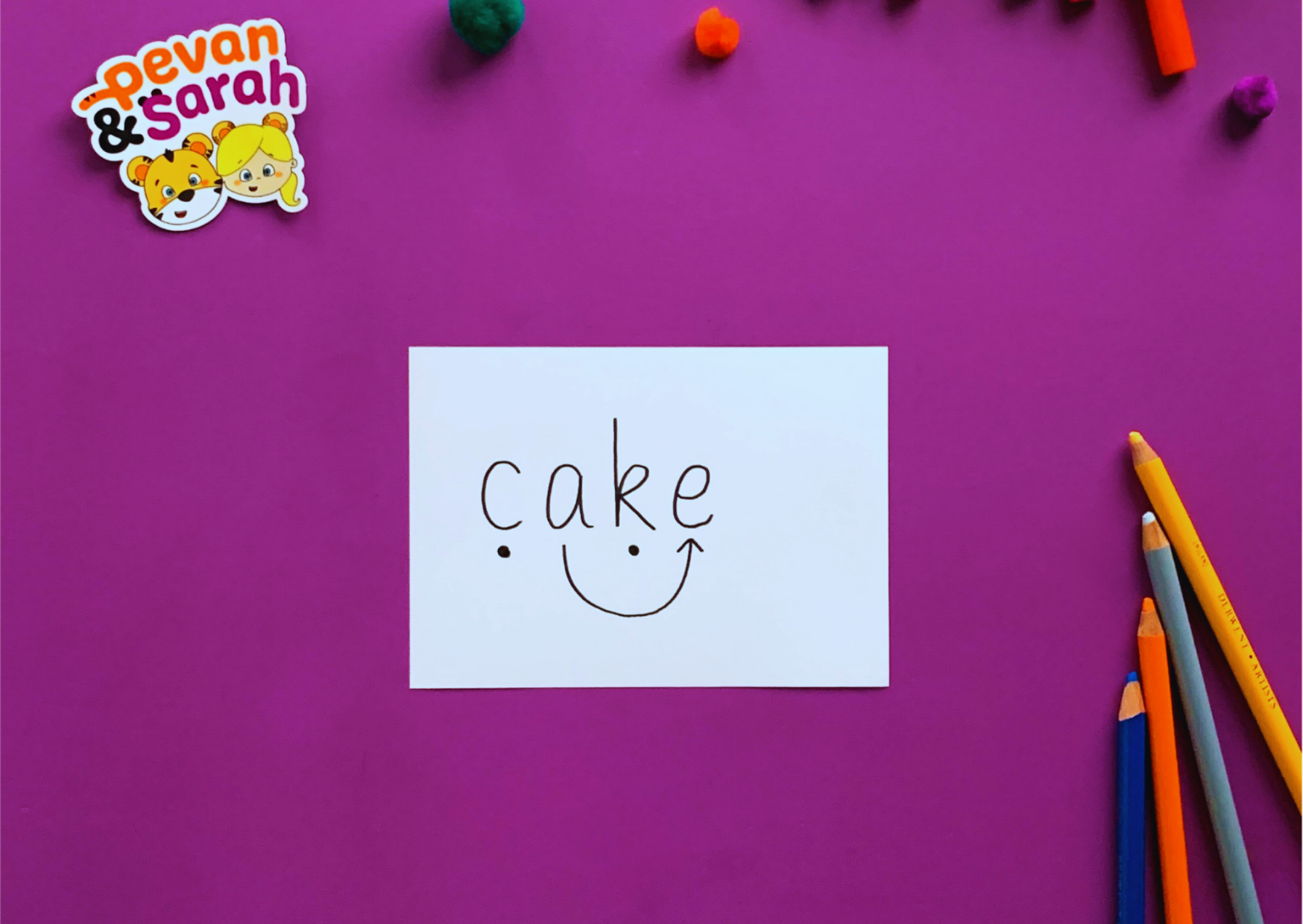
Repeat this many times with different examples, over several sessions - practice makes progress!
Teachers have invented some clever ways of explaining the effect of the ‘e’ on the vowel sound. One way is to explain that the vowel and the ‘e’ are ‘best friends’ - they hold hands over the consonant to make one sound. This is a great opportunity to get students physically involved - have four students hold one letter card each to spell a word, with the students holding the vowel card and the ‘e’ card holding hands over the student with the consonant card.
Another way is to demonstrate how the ‘e’ changes the short vowel sound to a long vowel sound. Have students practice reading regular CVC words, then show how the word changes when the ‘e’ is added on the end. For example, can becomes cane, pin becomes pine and not becomes note. Some teachers like to explain that the ‘e’ makes the vowel ‘say it’s name’ - but be sure to clarify that this is not always the case (such as in words like more, give and were).
Pevan & Sarah’s Phonics Funk video series is perfect for introducing and reviewing split digraphs! Each video features a catchy tune that explicitly demonstrates how the two letters work together to ‘make a different sound’, shows examples of words containing the split digraph, and gives students the opportunity to practice reading split digraph words.
Cub Club subscribers can access the full video series by clicking the image above. Not a subscriber? Check out a preview of the video series here, or sign up for a 7 day free trial to watch them all.
However you teach them in your classroom, you’ll need some great ideas for helping kids practise reading and writing split digraphs. Let’s move on to the next section!
Fun classroom activities and resources for practising split digraphs
Introducing the concept of split digraphs is just the first step. Your students will need lots of practise identifying, reading and writing words with split digraphs - and that’s where the fun starts! Here’s a list of activities and resources you can use in your classroom to help your students understand those ‘magic e’ words.
1. Go on a word hunt. Find examples of split digraphs in class texts or decodable books, and record them all in a big class list. Alternatively, ‘hide’ words with split digraphs around the room for students to find. You could mix them with other words containing long vowel sounds and have students sort them into columns - for example, words that contain ‘ai’, ‘ay’ and ‘a_e’.
2. CVC → CVCe words. Write CVCe words onto strips of paper, then fold the ‘e’ behind the word. Students practice reading the CVC word, then fold the ‘e’ forward and read it again with a long vowel sound. For example, mat → mate and rob → robe.
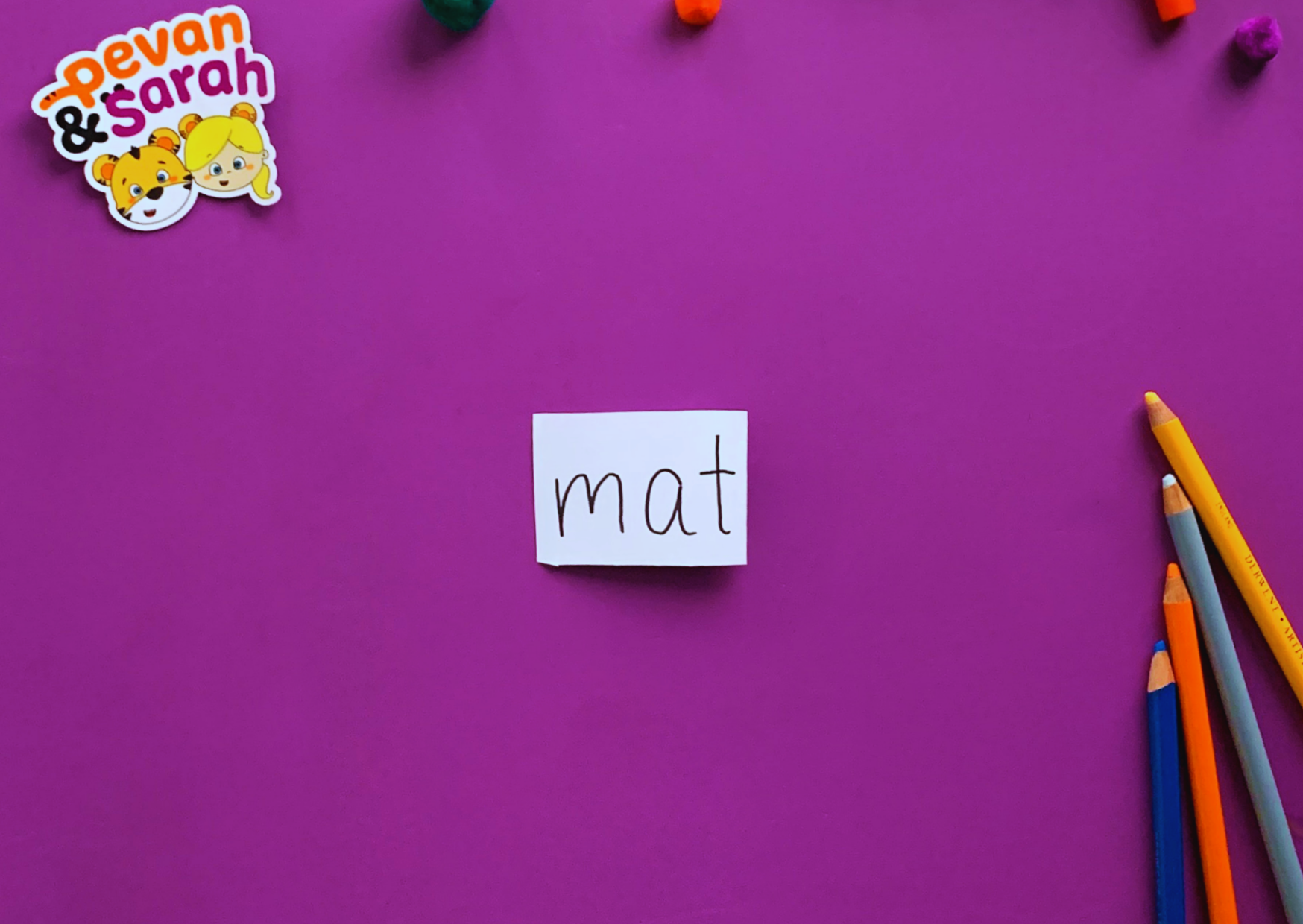
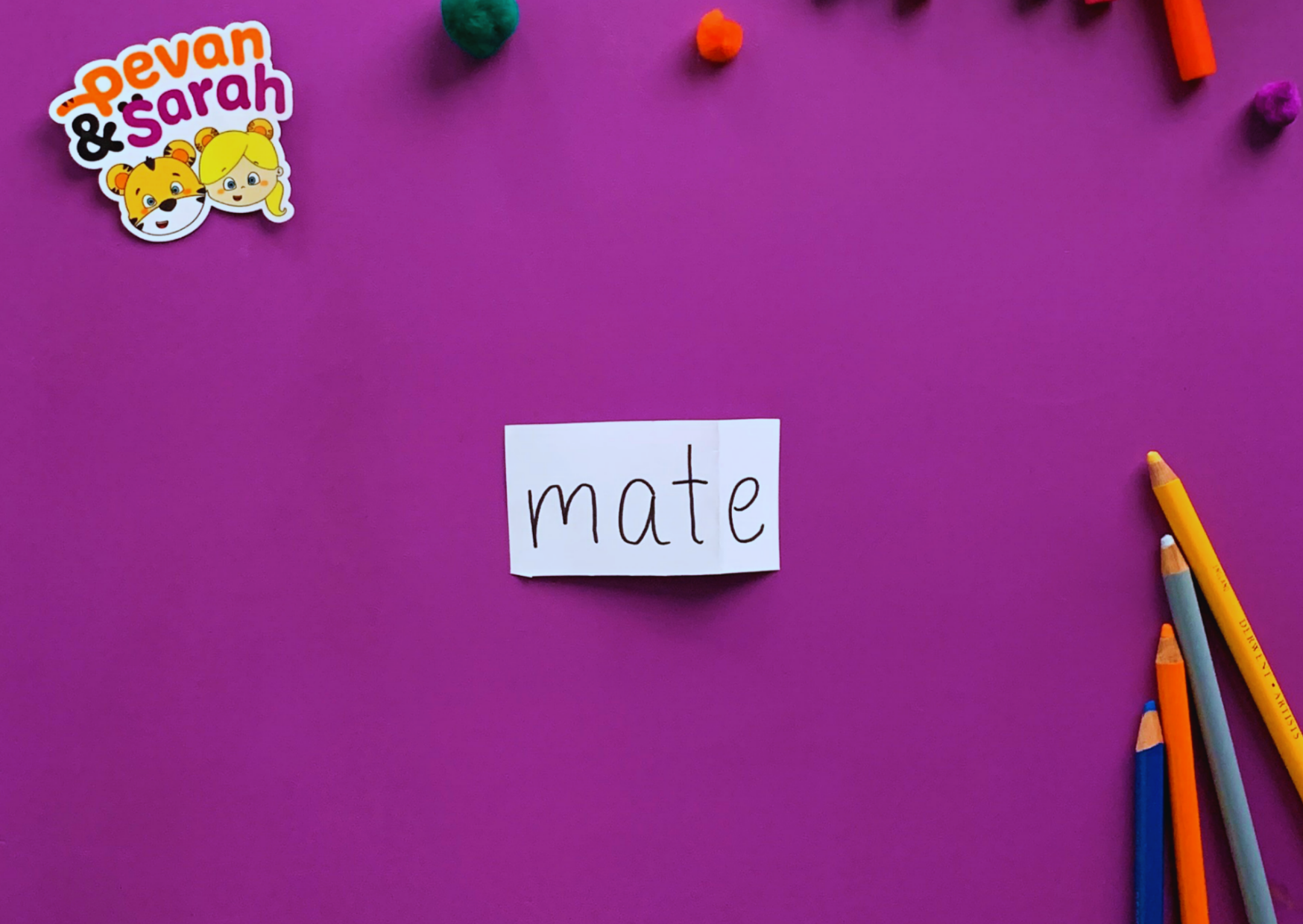
3. Split Digraph flash cards. Use these in whole class, small group or independent learning to practise reading a variety of words with split digraphs. Laminate them for extra durability, and use dry erase markers to draw an arrow from the vowel to the ‘e’ to show how the two letters connect.
Split Digraphs word and picture cards are available for Cub Club subscribers to download.
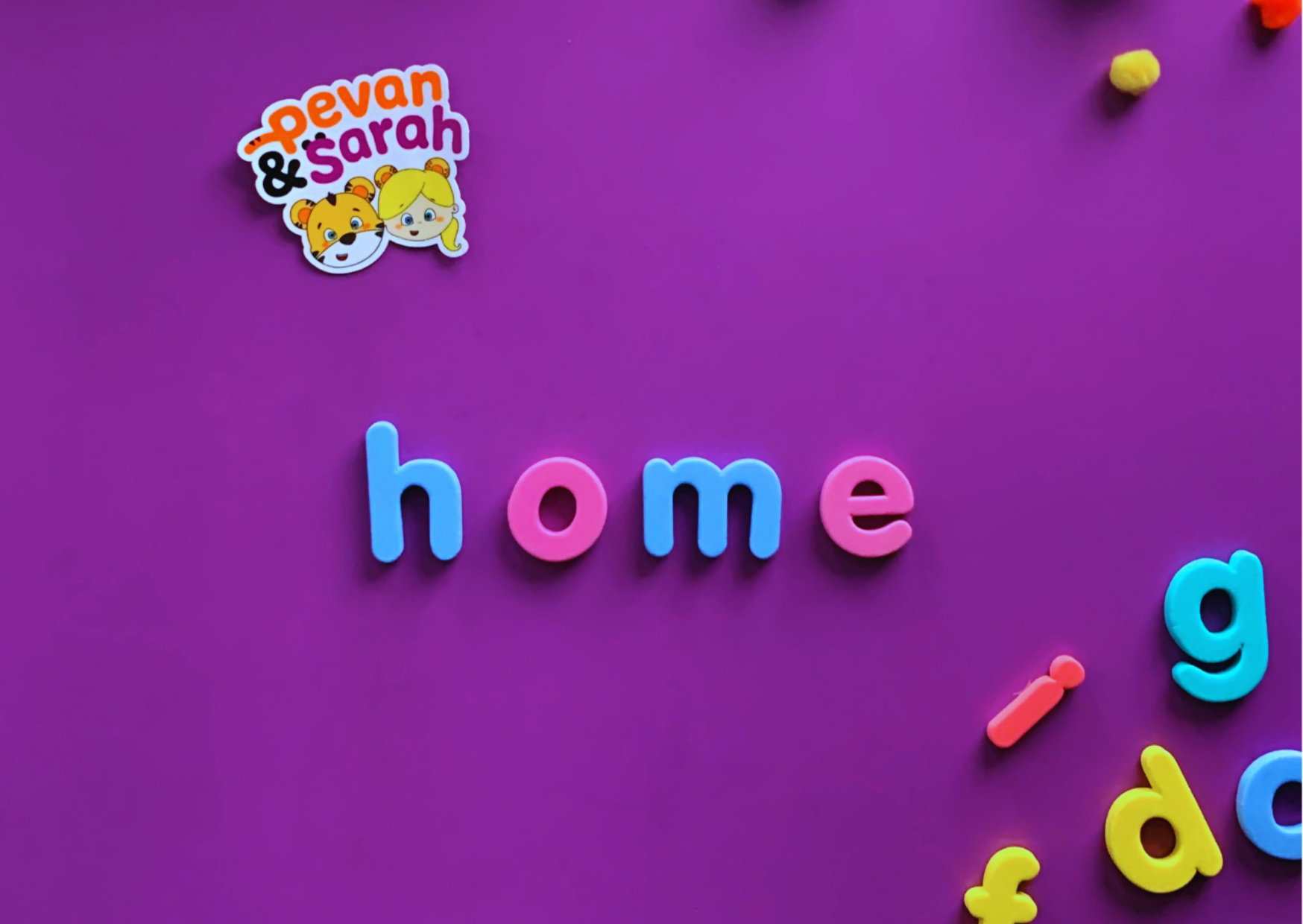
4. Magnetic Letters. Students can copy and build split digraph words with magnetic letters. Sets that have different colours for vowels and consonants are particularly useful for showing the split digraph relationship.
5. Multi-sensory practice. Practice writing and making split digraphs words with different items - this is great for strengthening neural pathways and helping kids connect the letters with the sound. Some ideas for multi-sensory practice with split digraphs include:
- Tracing split digraphs words in sand or shaving cream
- Making words out of playdough
- Writing words in the air
- Using chalk or paint to write
- Tracing words onto a friend’s back
- Using ‘phoneme fingers’ or arm tapping to orally blend and segment words. This involves counting or tapping out the sounds in words and then blending them together to form the word.
6. Games! Games are a fantastic way of making phonics practice fun. Try some of the following games to help students practise reading and writing split digraphs:
- Memory - use our picture and word cards to play a game of Memory where students match the picture to the word card.
- Go Fish - similarly, have students try to collect matching picture/phoneme cards. Players begin with a mix of picture and phoneme cards and ask their opponents for phoneme cards that match their picture cards. For example, to go with the picture of a nose, a player would ask their opponent, ‘do you have an o_e?’. The player with the most matches at the end wins!

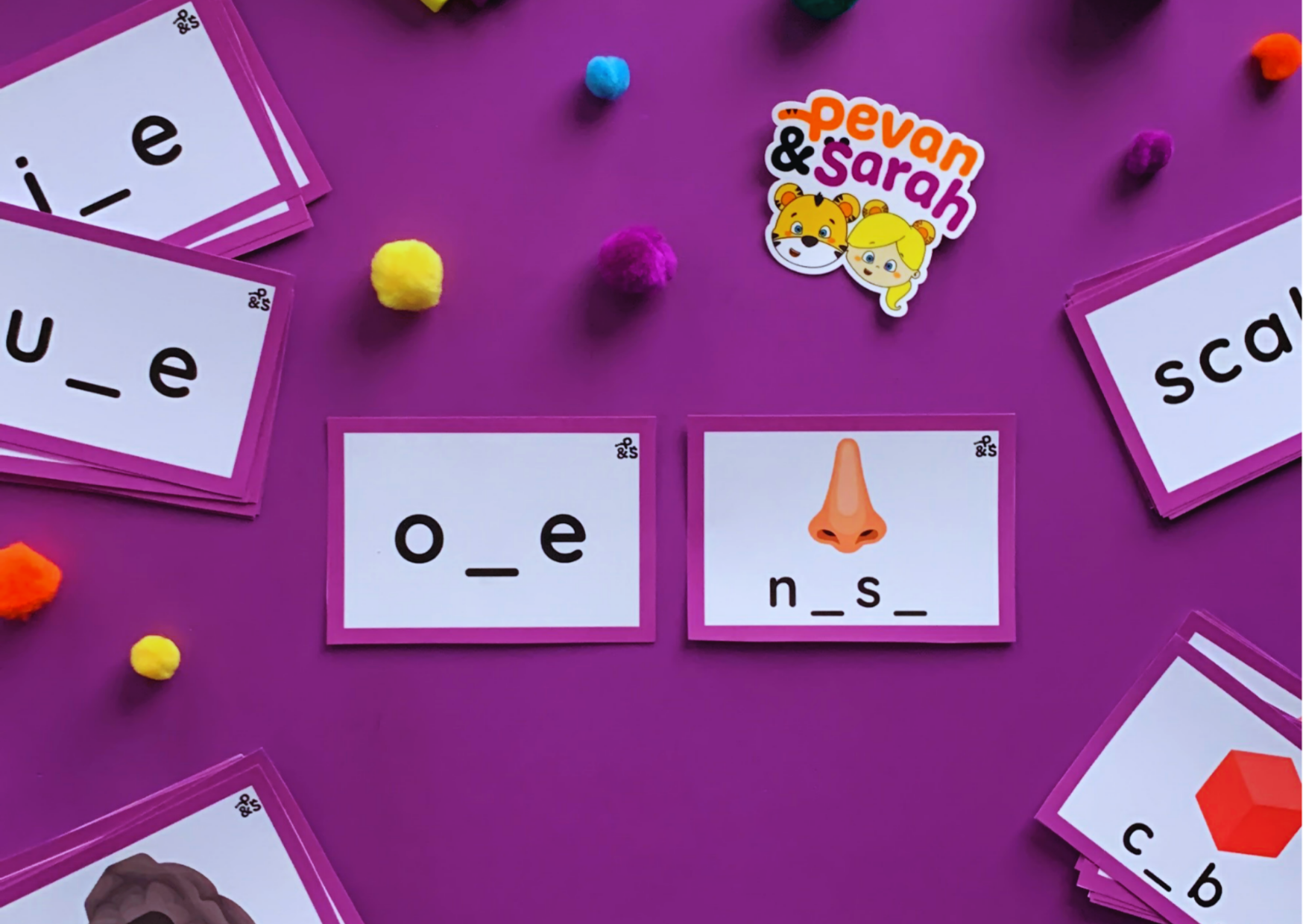
Use our Split Digraphs Picture and Word Cards for these games!
- Roll & Read - this is an easy, no-prep game for one, two or three players. Players roll a die and choose a word from that row to read. If all players agree that it’s correct, that player can place a counter on the word. Play continues until all words are covered or cannot be read. The player with the most counters is the winner. Split Digraphs Roll & Read is available to Cub Club subscribers.
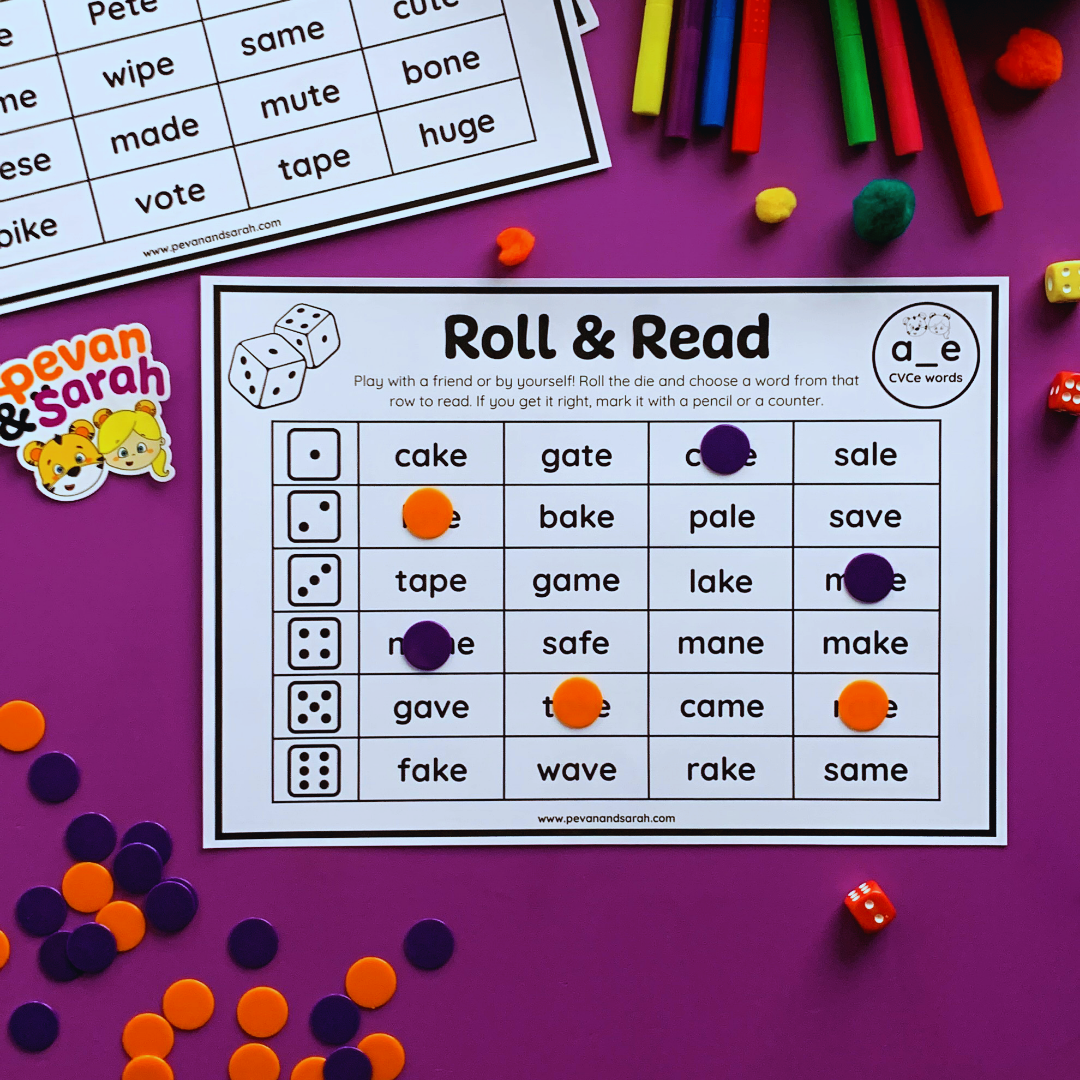
- Puzzles - a fun, hands-on way of practicing split digraphs, we have options for matching puzzle cards and picture puzzles. Great for literacy centers, rotations, morning work or home practice.
7. Practice, practice, practice! With continued explicit modelling of reading and writing words with split digraphs and lots of opportunities for students to practise in small groups and independently, they'll be blending and segmenting split digraphs words in no time! Here are a few more of our resources that kids will love - use them in your classroom or at home to consolidate their learning.
Cub Club subscribers have access to our entire set of split digraphs resources, perfect for independent tasks or learning at home. Download them below!
Download Split Digraphs Picture and Word Cards
Download Split Digraphs Puzzle Cards
Download Split Digraphs Picture Puzzles - CVCe
Download Split Digraphs Picture Puzzles - CCVCe
Download Split Digraphs Roll and Read
Download Split Digraphs Fill in the Blanks
Download Split Digraphs Colour by Digraph
Download Split Digraphs Word Ladders
Want more literacy ideas and resources?
A Cub Club subscription gives you full access to an entire library of literacy videos, songs and printables. Need to teach kids about syllables? We have videos for that! How about rhyming words? Sing along with our super catchy Rhyme Time song! With hundreds of videos and printables for every area of the curriculum, Pevan & Sarah are the best addition to your early years classroom. Try Cub Club today with a 7 day free trial and see for yourself!
How do you teach split digraphs in your classroom? Have we missed any great ideas? Get in touch via our Contact form to share your thoughts!
Want more teaching tips, Cub Club updates and first access to freebies? Subscribe to our email list!


